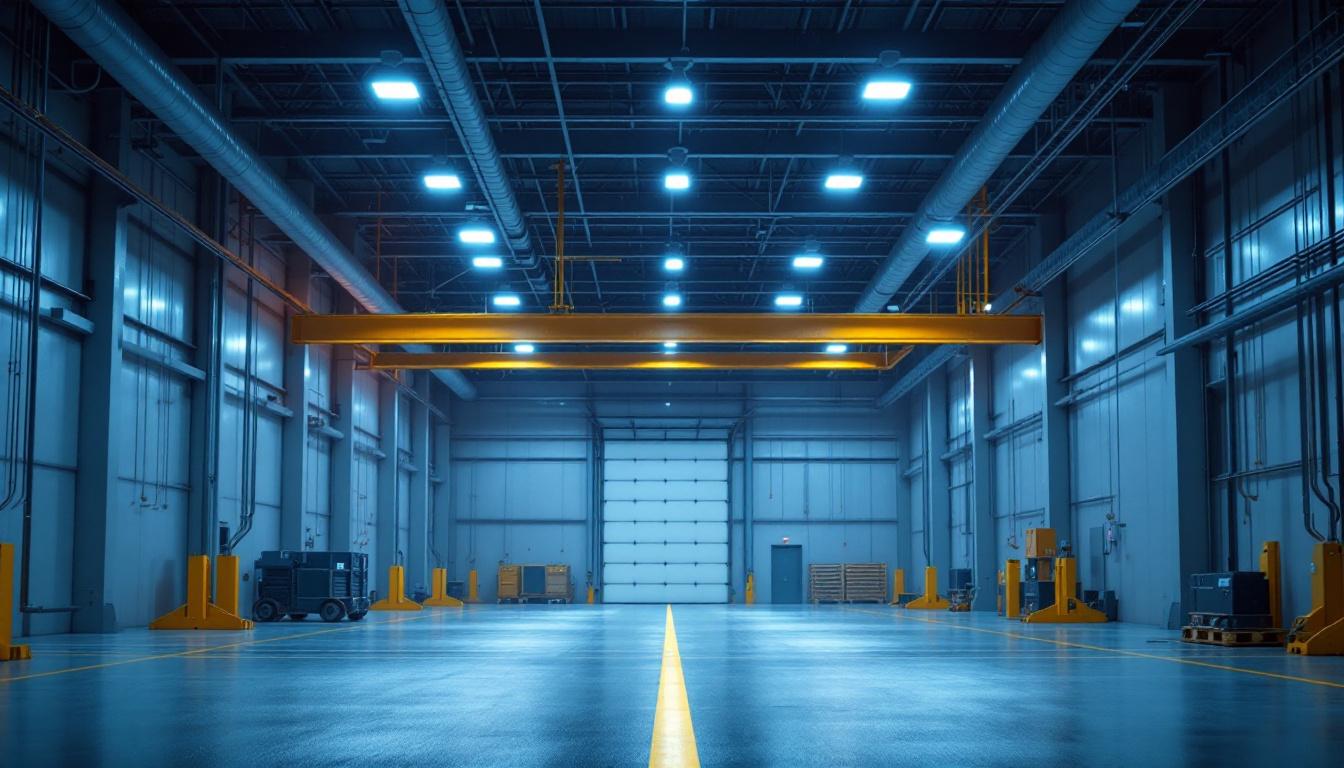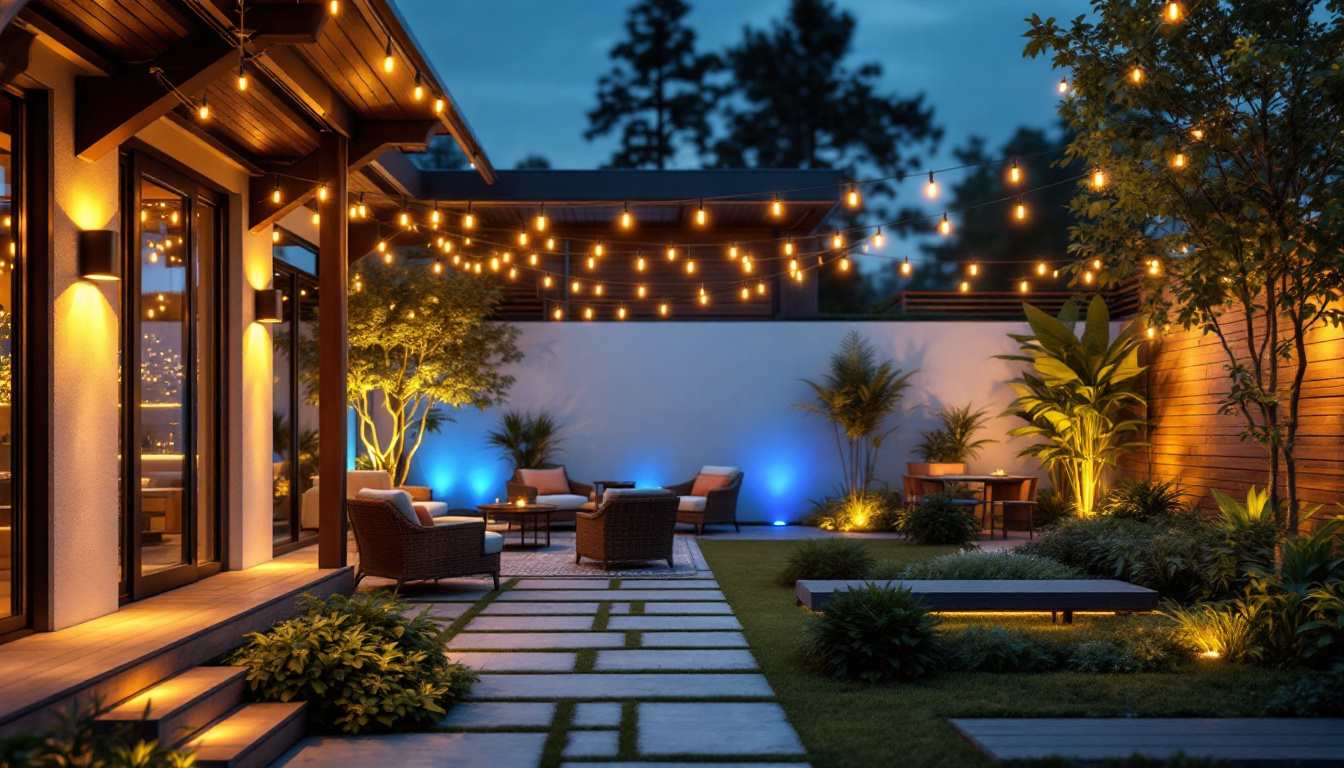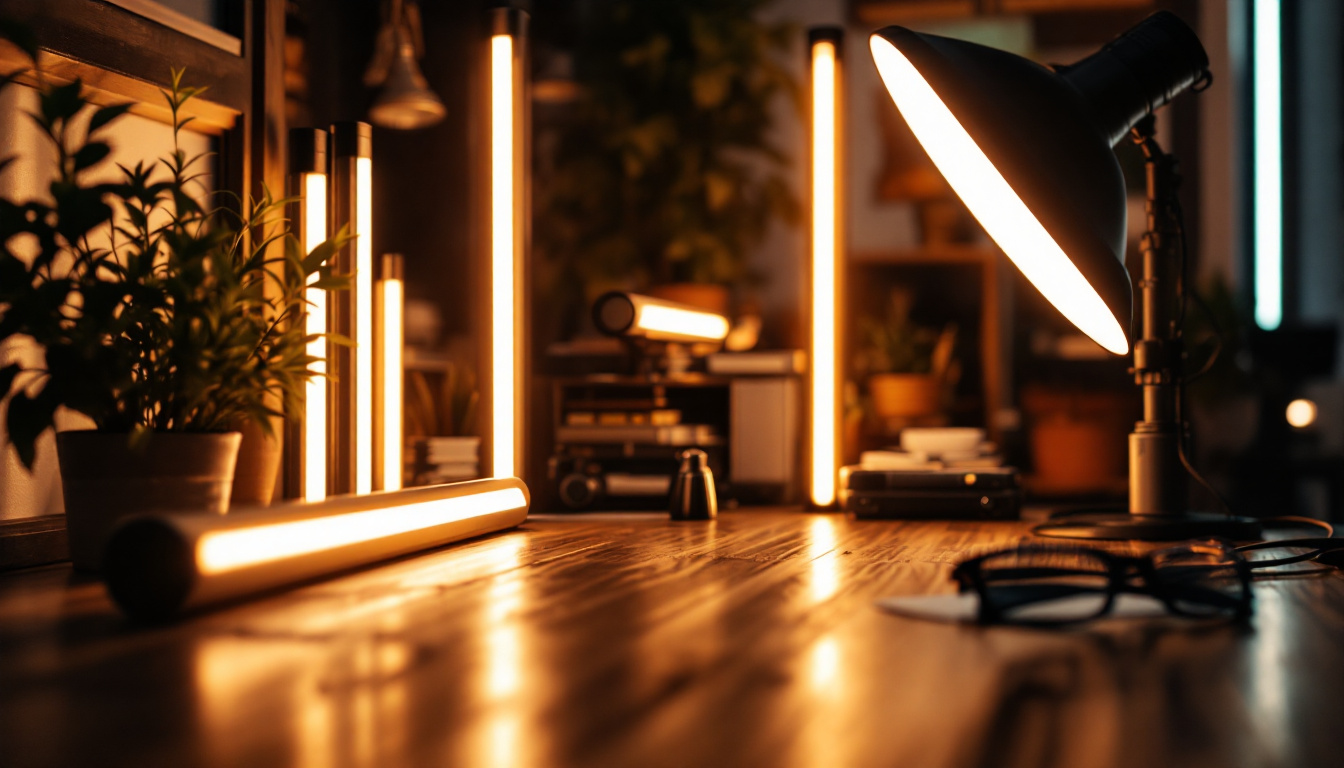
In the realm of industrial and commercial lighting, Hyperlite high bay lights have emerged as a popular choice due to their efficiency and effectiveness. These lights are designed to illuminate large spaces, such as warehouses, factories, and gymnasiums, where traditional lighting solutions may fall short. This article explores how to optimize Hyperlite high bay lights for maximum efficiency, ensuring that lighting contractors can provide their clients with the best possible solutions.
Before diving into optimization strategies, it is crucial to understand what Hyperlite high bay lights are and how they function. These lights are typically mounted at heights of 15 feet or more, making them ideal for large open spaces. They utilize advanced LED technology, which offers numerous advantages over traditional lighting solutions.
LED technology has transformed the lighting industry, providing a range of benefits that enhance the performance of high bay lights. One of the most significant advantages is energy efficiency. LED lights consume significantly less power compared to incandescent or fluorescent bulbs, resulting in lower energy bills for businesses.
Additionally, LED lights have a longer lifespan, often lasting up to 50,000 hours or more. This longevity reduces the frequency of replacements, minimizing maintenance costs and disruptions in operations. Moreover, LEDs emit less heat, contributing to a cooler environment, which is particularly beneficial in industrial settings. This characteristic not only helps in maintaining a comfortable temperature but also reduces the load on air conditioning systems, further enhancing energy savings.
Hyperlite high bay lights are versatile and can be used in various applications. Common environments include warehouses, manufacturing plants, retail spaces, and sports facilities. Each of these settings has unique lighting requirements, which can be met effectively with the right configuration of high bay lights.
For instance, in a warehouse, adequate lighting is essential for safety and productivity. Hyperlite high bay lights can provide uniform illumination, reducing shadows and enhancing visibility. In contrast, in a gymnasium, adjustable lighting may be necessary to accommodate different activities, such as basketball or volleyball games. Furthermore, in retail environments, the ability to highlight specific merchandise can significantly impact sales; thus, strategically placed high bay lights can enhance the shopping experience by drawing attention to featured products.
Moreover, Hyperlite high bay lights are increasingly being integrated with smart lighting technology, allowing for advanced control systems that can adjust brightness based on occupancy or time of day. This not only improves energy efficiency further but also provides a tailored lighting solution that can adapt to the dynamic needs of various spaces. For example, in a manufacturing plant, lights can be programmed to brighten during peak operational hours and dim during off-peak times, ensuring optimal lighting conditions while conserving energy.
To optimize Hyperlite high bay lights for maximum efficiency, several factors must be considered. These include the layout of the space, the height of the fixtures, the type of lens used, and the overall lighting design. Each of these elements plays a crucial role in achieving the desired lighting outcome.
The layout of the space being illuminated significantly impacts the effectiveness of high bay lights. Lighting contractors should conduct a thorough assessment of the area, taking into account the dimensions, obstacles, and intended use. For example, in a warehouse with high shelves, it may be necessary to position lights strategically to ensure that all areas are adequately lit.
Moreover, considering the color and reflectivity of surfaces within the space can enhance lighting efficiency. Light-colored walls and ceilings can reflect more light, reducing the number of fixtures needed to achieve the desired illumination level. Conversely, darker surfaces may absorb light, necessitating additional fixtures or higher wattage bulbs. Additionally, the arrangement of furniture and equipment can create shadows or obstruct light paths, so planning the layout to minimize these issues is essential for optimal light distribution.
The height at which Hyperlite high bay lights are mounted is another critical factor in optimizing efficiency. Generally, the higher the fixture, the wider the spread of light. However, this can also lead to decreased intensity. Therefore, it is essential to find the right balance between height and light output.
For spaces with high ceilings, such as warehouses, mounting fixtures at the appropriate height can minimize the number of lights required while still providing adequate illumination. Conversely, in lower ceiling environments, fixtures may need to be placed closer together to maintain sufficient light levels. In addition to height, the angle at which fixtures are installed can also affect light distribution. Tilting lights slightly can help direct light where it is most needed, reducing dark spots and enhancing overall visibility. This is particularly beneficial in areas where tasks require precision, such as assembly lines or detailed workstations.
The lens and beam angle of high bay lights greatly influence how light is distributed throughout a space. Hyperlite high bay lights typically come with various lens options, including clear, frosted, and prismatic lenses. Each type has its advantages, depending on the application.
Clear lenses allow for maximum light output and are ideal for spaces requiring high-intensity lighting. However, they may create glare, which can be problematic in certain environments. Frosted lenses diffuse light, reducing glare and creating a softer illumination, making them suitable for areas where visual comfort is essential.
Prismatic lenses offer a balance between light diffusion and intensity. They can help distribute light evenly across a space while minimizing glare, making them a popular choice for high bay applications. Selecting the right lens is crucial for achieving the desired lighting effect while maintaining comfort and safety. Additionally, the choice of lens can also affect energy efficiency; for instance, a well-chosen lens can enhance the overall performance of the lighting system, leading to lower energy consumption and reduced operational costs over time.
The beam angle of high bay lights determines how focused or spread out the light is. A narrow beam angle is ideal for illuminating specific areas, such as workstations or display areas, while a wider beam angle is better suited for general illumination in larger spaces.
When optimizing lighting, consider the activities that will take place in the space. For example, a manufacturing facility may require focused lighting on work areas, while a warehouse may benefit from broader illumination to enhance overall visibility. Furthermore, the height at which the lights are installed plays a significant role in beam angle effectiveness. High bay lights installed at greater heights can utilize wider beam angles to cover more ground, while lower installations may require narrower beams to achieve the desired intensity and focus on specific tasks. This nuanced approach to beam angle selection can significantly enhance productivity and safety in various environments.
Incorporating smart lighting controls into the design of Hyperlite high bay lighting systems can significantly enhance efficiency. These controls allow for greater flexibility and adaptability in lighting management, leading to energy savings and improved functionality.
There are various types of smart lighting controls available, including occupancy sensors, daylight harvesting systems, and programmable timers. Occupancy sensors automatically turn lights on or off based on the presence of people in the area, ensuring that lights are only used when necessary.
Daylight harvesting systems adjust the intensity of artificial lighting based on the amount of natural light available. This approach not only saves energy but also creates a more pleasant working environment by maintaining consistent light levels throughout the day.
Integrating smart controls into Hyperlite high bay lighting systems can lead to substantial energy savings. By reducing unnecessary lighting usage, businesses can lower their energy bills and decrease their carbon footprint. Additionally, smart controls can enhance safety and productivity by ensuring that areas are well-lit when needed.
To maintain the efficiency of Hyperlite high bay lights, regular maintenance is essential. Over time, dust and debris can accumulate on fixtures, reducing their light output and overall performance. Implementing a maintenance schedule can help ensure that lights remain in optimal condition.
Cleaning high bay lights should be a routine part of maintenance. Depending on the environment, fixtures may need to be cleaned every few months to prevent dust buildup. Additionally, regular inspections can identify any potential issues, such as flickering lights or damaged components, allowing for timely repairs.
During inspections, it is also important to check for any signs of wear or damage to the fixtures themselves. Replacing worn-out components can prevent more significant issues down the line and ensure that the lighting system continues to operate efficiently.
As technology advances, upgrading components of the lighting system can further enhance efficiency. For example, replacing older LED modules with newer, more efficient models can provide better light output while consuming less energy. Staying informed about the latest advancements in lighting technology can help contractors offer the best solutions to their clients.
Optimizing Hyperlite high bay lights for maximum efficiency involves a comprehensive understanding of the technology, careful planning, and regular maintenance. By considering factors such as space layout, fixture height, lens options, and smart controls, lighting contractors can deliver effective and energy-efficient lighting solutions to their clients.
As the demand for energy-efficient lighting continues to grow, staying informed about the latest trends and technologies in high bay lighting will be crucial for contractors. By implementing these optimization strategies, businesses can enjoy the benefits of enhanced visibility, reduced energy costs, and improved overall safety in their spaces.
Ready to elevate your lighting projects with the efficiency and quality of Hyperlite high bay lights? Look no further than LumenWholesale for all your lighting needs. We provide contractors with the highest-grade lighting products at unbeatable wholesale prices, ensuring you get the most value for your investment. With our direct-to-contractor approach, you’ll enjoy superior lighting solutions without the extra costs of middlemen. Plus, our commitment to hassle-free bulk buying with free shipping means you can stock up on premium lighting effortlessly. Don’t compromise on quality or price. Visit LumenWholesale today and discover the best in wholesale lighting at the best value.

Discover expert insights from Ballard Light’s seasoned contractors as they illuminate the art and science of lighting design.

Discover essential insights with our comprehensive checklist for lighting contractors focusing on LED fluorescent lamps.

Discover the ultimate guide to LED light tubes with our essential checklist tailored for lighting professionals.

Discover the benefits of LED conversion bulbs and how they can transform your home into an energy-efficient haven.